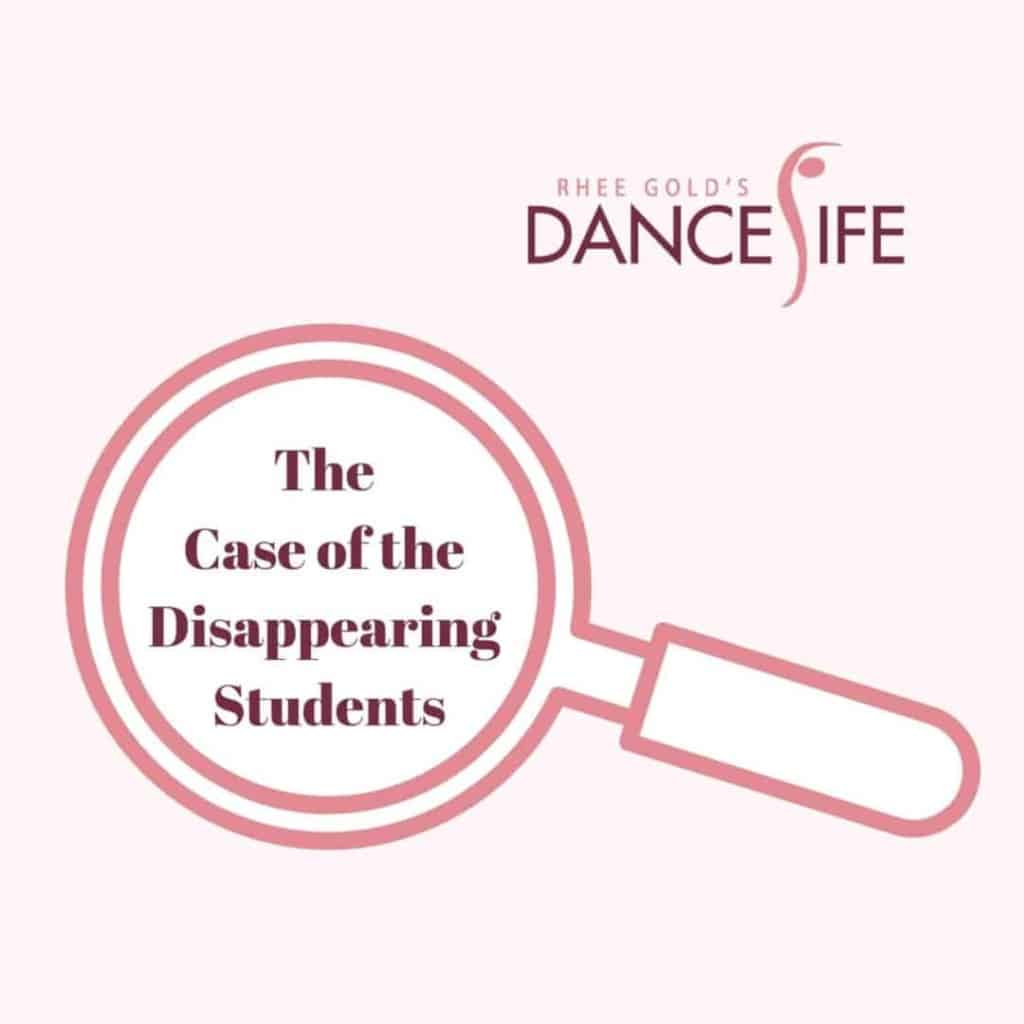The Case of the Disappearing Students

by Rhee Gold
How to solve the case of the disappearing students
Through my research with dance school owners, I’ve discovered that it is not uncommon for their businesses to have up to a 30 percent turnover of students from year to year. Looking deeper, I discovered that a large number of that 30 percent are recreational and preschool-age students—which means that not only are school owners losing students; they’re losing the very children who are the financial lifeblood of the school. When those numbers dwindle, the future looks a bit gloomy.
There are many factors that lead students to discontinue dance classes. In about 10 percent of the cases, they drop out of class because they are “just not into dance,” or because another activity seems more inviting. Most people would tell you that there isn’t much you can do to keep this group coming to dance class. However, I don’t give up that easily! I think it’s possible to win over some of these kids with a classroom that is exciting and with teachers who have the passion to work with recreational or preschool levels. If students were to tell me that they wanted to drop from my class, I might suggest that they move into a class with a different teacher or take a different kind of dance.
Another possible issue with kids who claim they don’t like dance is a lack of confidence; lots of them don’t believe they’re good enough (even the ones who are). For some of them, their home environments create or contribute to this problem. For example, if a girl hears “Susie, you’re clumsy and uncoordinated” day in and day out from her parents, Susie has no reason not to believe them. It doesn’t cross her mind that her parents might have no idea what they’re talking about. So she shows up for class with ballet shoes in hand—and zero confidence, because she believes her parents’ criticism is true. Our ability to recognize and take action to encourage these children is not only the key to hanging on to them, it’s essential in making a difference in their lives.
Among the remaining 20 percent of students who quit taking dance lessons, the reasons vary. The following are some of the most common ones.
Boredom
This is a huge issue for students who drop. They sign up for dance thinking that they’re going to have fun—and they usually think it is until it comes time to learn choreography for the recital or year-end performance. Their enthusiasm wanes when they are expected to work on the same piece of choreography and listen to the same music for weeks or months at a time. Many will make it through the year because they are excited about being onstage, but often they have made a mental note that after the recital they will be done with dancing.
Spending less time on the same choreography and music will make a big difference to this group. Another approach to consider is getting that choreography done early, so that in the last six to eight weeks of class you can go back to the fun stuff that the kids registered for in the first place.
Unenthusiastic teachers
A lack of enthusiasm from a teacher will produce a similar response in the students, and it’s a tried-and-true recipe for losing your recreational and preschool kids. Teachers set the atmosphere of their classrooms; if they aren’t excited about the class, then neither will their students be. This occurs with teachers who would rather be somewhere else—and often that somewhere else is with the most advanced dancers. They have the attitude that the recreational students are beneath them, and the students know it.
Same ol’, same ol’
When students learn the same material each year, often as a result of new beginner students being added to an already established class, they fail to see any progression. Instead, they feel that they are being held back, learning the same material each season. Then, when it comes to choreography for the recital, some teachers cop out by using the same music and choreography that they’ve used in the past. The choreography is lame and the kids can feel it. They know that they’re second-class citizens.
Parental influence
If parents aren’t happy with the customer service or organization of the school, they tend to encourage their children to find another activity. This is especially a problem when a parent expects that a class will start and end at a certain time, yet that isn’t the way it goes. Another problem that makes them want to pull their children out of the school is “surprise” expenses. These parents expected to pay a certain amount for classes and the recital; then suddenly, to their surprise, they are hit with more fees that were never mentioned. Unhappy parents, in many cases, means unhappy students—and even when it doesn’t, many parents won’t continue to pay for a product they’re not satisfied with.
Intimidation
Students who are constantly compared to their more advanced peers—and who know they will never be able to accomplish that level of skill—will not feel good about dancing. Who wants to remain in a place that makes them feel inferior? Though some students may never develop technical expertise, a good teacher will find other positive aspects of their behavior or training to praise them for, like commitment, perseverance, a can-do attitude, achieving a personal best, expressiveness, creativity, or a sense of humor.
Not getting what they expected
Some school owners seem to think that they can tell kids one thing and do another. Disappoint them once too often, though, and you may find your roster shrinking. For example, if students register for a hip-hop class but find that it is taught by someone who has no hip-hop credentials, they will know it. They may quit dancing altogether or look for a real hip-hop class somewhere else.
I find that most school owners understand and try to avoid these problems, but for some reason they don’t communicate their beliefs to their faculty and staff. If you’re worried about your school’s dropout rate, bring these concerns to your next faculty and staff meeting. Once everyone in your school shares the same philosophy and behaviors, you should see that dropout rate start to decrease.






Hi,Rhee! This material is very informative and so true in my eyes of almot 30 years of teaching. You have informed people of what is a lifetime of experience in our field of Dance. If our fellow Dance teachers follow these suggestions they will succeed in building a great Studio. Along with what you have said, I would like to say you are so right about our staff sharing our philosophy and behaviosr. If we don’t have their support with our beliefs they aren’t an asset to our Business. That is very important to the success and happiness of our Students. Thank you again for all the fabulous, iformative information you pass on to us. You’re the Best. Dancingly, Liz Casale.
Hi,Rhee! This material is very informative and so true in my eyes of almot 30 years of teaching. You have informed people of what is a lifetime of experience in our field of Dance. If our fellow Dance teachers follow these suggestions they will succeed in building a great Studio. Along with what you have said, I would like to say you are so right about our staff sharing our philosophy and behavios. If we don’t have their support with our beliefs they aren’t an asset to our Business. That is very important to the success and happiness of our Students. Thank you again for all the fabulous, informative information you pass on to us. You’re the Best. Dancingly, Liz Casale.
Gotta love this post. Makes me think about my fave hip hop artist Mickey Factz who has got his raps don’t dissappoint yo!